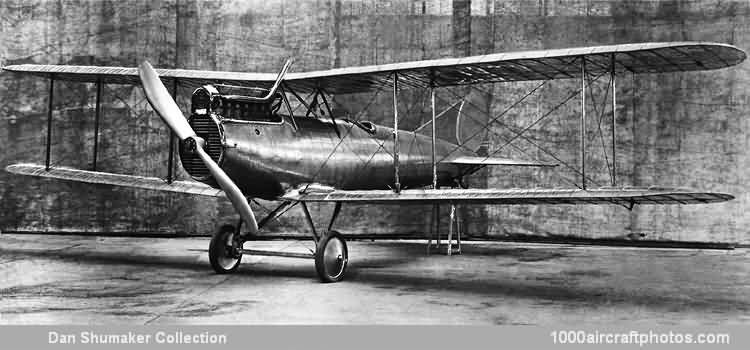Short Brothers thus began to learn the technique of using duralumin during 1916, and three years later Oswald Short had sufficient confidence in this alloy to propose its use as the principal material for an aeroplane, even for the covering of the wings and tail. He cited many advantages of all-metal construction, such as freedom from warping and deterioration under varying climatic conditions, absence of any water-soakage weight penalty (which could be as much as half a ton in a large flying boat hull) and elimination of fire risk.
In 1919, concurrently with the Shrimp, he designed a land biplane of similar size, using much of the same geometry except that the components were made from duralumin plate instead of plywood. He asked the Air Ministry to contribute to the cost of a prototype, and when this was refused, after several months waiting, he began in February 1920 to build it as a private venture.
The result was the Swallow, soon renamed Silver Streak, which made unflown its first public appearance at the Olympia Aero Show on July 9, 1920. It was a two-bay un-staggered equal-span tractor biplane of conventional appearance, powered by a single 240 hp Siddeley Puma engine, with accommodation for a pilot and 400 lb (181 kg) of mail or cargo; alternatively, it could be modified to carry a pilot and two passengers.
The appearance of the Silver Streak at Olympia was without doubt the signal that a new era had begun in the aircraft industry, and observers agreed that it was the first time they had seen an aeroplane which could claim to be a true engineering job throughout. The pundits were worried about corrosion, to which Oswald Short replied: 'Why be so afraid of that? Corrosion has been with us ever since we started building structures, only we cal! it rust and are not afraid of it.' Oswald Short had tested duralumin plates immersed in the tidal Medway for nine months with very positive results.
Although the Silver Streak attracted a great deal of interest at the show, particularly from Americans, no firm enquiries were received, and it went back to Rochester to be prepared for flight tests. The civil registration G-EARQ had been reserved, but the issue of a CofA was refused on the ground that too little was known about the long-term behavior of a duralumin primary structure; this was in spite of all the accumulated experience of the Zeppelin Co. and Vickers Ltd. on airship construction, which Short Brothers already shared.
At length the Air Ministry decided to purchase the Silver Streak, modified into a two-seater, for evaluation. The Silver Streak had its maiden flight at Grain on August 20, 1920, with Chief Test Pilot John Parker at the controls,. The original aluminum wing skin was found to buckle and dent too easily and was replaced by duralumin; Parker recommenced flying on January 27, 1921, at Grain, followed by a flight with Experimental Department Manager Oscar Gnosspelius as passenger.
The Silver Streak was delivered to Farnborough by Parker and Gnosspelius on February 1, at a cruising speed of over 120 mph (193 kmh); on arrival the Silver Streak received the official serial J6854, but apparently never wore it. After a thorough but protracted survey by the RAE specialists, reluctant permission was given for limited non-aerobatic flight tests, and after a 25 min flight on June 3, Flight Lieutenant Jack Noakes reported: 'Remarkably quick get-off; it lands without bumping owing to the dashpot arrangement on the chassis; the tail plane is the steadiest I have seen in the air; it has a remarkable climb and is very easy to control....'
In fact it climbed to 10,000 ft (3,048 m) in 11 min and its top speed was better than 125 mph. In spite of its excellent performance in two subsequent flights, no further test flights were permitted and thereafter the machine was reserved for structural testing. On completion of the static tests in September, the airframe was subjected to 100 hours of vibration testing on November 9 to 11, 1921 no signs of cracking or loose rivets could be detected."
